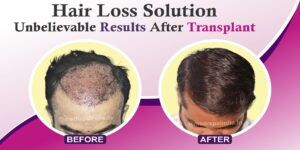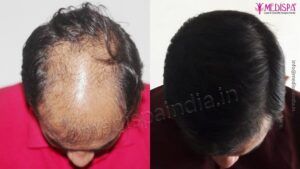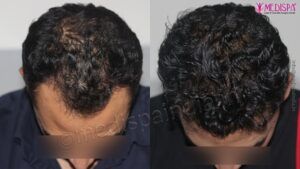
We really believe in upholding a healthy lifestyle, but we neglect to care for our hair till it becomes bald on top. Yes, when hair loss undermines your confidence, we frequently ignore the early warning signals and anxiously search for treatments.
Guess what? A hair transplant can help you regain a full head of hair that may not exactly resemble your youthful appearance but will undoubtedly grow in a nice manner. If you are concerned about your baldness or the thinning of your hair, a hair transplant may be an option for you. But since you need to know how the surgery goes, the first step in the process is to discuss it with your doctor.
For patients from around the world interested in hair transplant tourism, India has emerged as the top destination. Hair transplant in Jaipur, India, has drawn interest from those who suffer from hair loss all over the world. Although though hair transplant cost in Jaipur is quite reasonable, the quality that you receive is what attracts people the most.
One of the most popular locations for hair transplants in India is the Medispa hair transplant facility in Jaipur and Delhi. We are devoted to providing excellence, and we’ve helped more than 10000 people with hair loss with outstanding outcomes. Dr. Suneet Soni is one of the best hair transplant surgeons in the world. He possesses a remarkable knack for artistic sensibility, making him an expert in producing hair transplant outcomes that look natural. He specialises in using a mix of the FUT and FUE techniques to treat advanced bald patients in a single session.
So, the medispa hair transplant clinic is undoubtedly the place to go if you’re looking for the top hair transplant surgeon.
What is hair restoration?
Hair restoration is a complex surgical procedure that involves moving harvested hair follicles from donor sites to bald areas as needed. The area from which the hair follicles are removed, which should only be those that have permanent hair roots, is referred to as the donor area in the procedure. The regions can be the sides and back of the head, the chest, the axilla, the beard, or the pubic region. Only when these donor locations have enough hair follicles to provide you the desired coverage would the process be feasible.
Techniques to perform hair restoration
Either the FUT technique or the FUE technique can be used to execute the hair transplant surgery. The following explanations explain how the methods used in these processes differ in how the hair grafts are harvested:
In order to harvest each individual hair graft using the strip or FUT technique, a portion of skin must first be removed and then dissected. When the donation has been made, the donor site is stitched shut. Contrarily, in a FUE hair transplant, each hair graft is extracted using a punch instrument that is introduced inside the skin and pulls the hair graft along.
The required locations where coverage is needed are chosen after the hair grafts have been harvested.
When can you choose hair restoration?
If you are truly losing your hair, you probably want to know when to have a hair transplant. The doctor should thoroughly examine your bald area during a consultation, determine the cause of your hair loss, and recommend the most effective course of action.
You might be a good candidate for a hair transplant if your hair loss is irreversible. However, there are a few tests that must be done to determine whether a hair transplant is feasible.
- The patient should be otherwise healthy and free of any conditions that could impair healing or induce hair loss.
- The hair loss needs to be consistent for at least three years.
- To ensure that there are enough hair follicles to cover the bald area, the donor location’s hair density must be adequate.
- You have reasonable expectations and are fully cognizant of the advantages and disadvantages.
Recovery following hair transplant
The surgery may require four to nine hours in a session to complete, and the physical recuperation after a hair transplant might take a week or ten days. After the procedure, you can leave the hospital the same day.
The area may remain swollen for a few days following the treatment, so the surgeon may suggest you to sleep with your head elevated at 45 degrees and wear a headband. After the treatment, you might experience some pain or soreness in that area for a few days, but if necessary, you can take the doctor’s painkillers to manage your discomfort.
You should not fret at all if you are concerned about inconvenience following a hair transplant because you can start working the very next day. Although the healing process is ongoing, there are a few guidelines you must abide by.
Speaking of hair growth after the treatment, you should be informed that it will take around 5 to 6 months for the hair growth to be fairly obvious and that you cannot anticipate immediate hair growth following the procedure. You will naturally lose the transplanted hair after a few days, which is completely normal. Probably after a year following the hair transplant, you would be able to observe the full hair growth.
Hence, having your hair transplanted will actually be a wonderful experience; all you need to worry about is finding the best hair transplant specialist.







